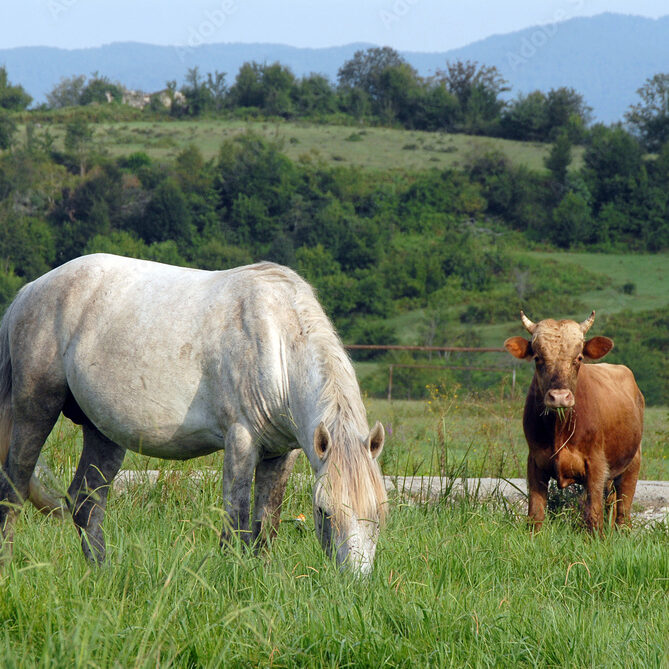Resources
- Georgia Pork Producers – “Promoting Pork as the Meat of Choice while Enhancing the Success of the Georgia Pork Industry”. Summarizes environmental regulations governing Georgia’s swine operations.
- National Pork Board Provides current and historical market data. Certifies producers, transporters and handlers, and youth in pork quality assurance. Explains pork production careers and workplace safety and production issues, with an emphasis on health. Administers numerous marketing and promotion programs. Funds research.
- Georgia Hogs An overview of hogs in Georgia, including industry history, present production, and feral hog problems.
PEDv – Porcine Epidemic Diarrheal Virus
- 3/28/24 – A case of porcine epidemic diarrheal virus (PEDv) has been confirmed in Georgia. This case is in a non-commercial herd. Producers should institute enhanced bio-security practices on their operations. Show pig producers should practice extreme care when going to and returning from shows. If possible, animals going to shows should be isolated when they return to the barn. Symptoms of PEDv include watery diarrhea, vomiting, lethargy, dehydration and death in young pigs. Producers with pigs exhibiting these symptoms should consult their veterinarian immediately.
- Porcine Epidemic Diarrhea Porcine Epidemic Diarrhea (PED) is a viral disease caused by a member of the family Coronaviridae. Although clinically similar to transmissible gastroenteritis (TGE), the virus is unrelated to TGE. Prior vaccination for TGE (or, presumably, prior exposure to TGE or respiratory coronavirus) does not infer protection against PEDV.
- Introduction of PED virus into a naïve herd typically results in acute outbreaks of severe diarrhea, vomiting, high morbidity (often 100%) and variable mortality (as high as 100% in young pigs). The incubation period is short (2 – 4 days) and natural immunity develops over two to three weeks, resulting in colostral protection for neonatal piglets. The virus spreads via the fecal-oral route and fomites. The virus is diagnosed based on clinical signs, history, ELISA or electron microscopic examination of fecal material, PCR and post-mortem examination of dead pigs. Differentiation from TGE requires laboratory diagnosis. Treatment is supportive to maintain hydration. The virus is susceptible to a number of common disinfectants including: Virkon S, Clorox, 1 Stroke Environ, and Tek-Trol (Pospischil A, et al; 2002). Sanitizing and drying pig trailers is effective against PEDV. Preliminary results suggest that it may be possible to inactivate PEDV in the presence of feces by heating trailers to 160F for 10 minutes or by maintaining them at room temperature (68F) for at least 7 days (Holtkamp; unpublished 2013).
- Research has identified transportation and points of swine concentration (markets, buying stations, etc.) to be key sites of virus contamination and subsequent routes of exposure to naïve populations. Strict adherence to biosecurity measures designed to prevent exposure to contaminated fomites may help reduce the risk of disease transmission. PEDv working groups have issued recommendations to enhance biosecurity measures associated with markets, buying stations and transportation.
- PEDV is not a listed disease of the World Organization for Animal Health (OIE); is not considered a foreign animal disease in the United States; and there are currently no interstate trade restrictions pertaining to PEDV in U.S. swine. It is not a zoonotic disease, does not affect people, and is not a food safety concern
